Overview
The National Portrait Gallery (hereafter also referred to as the Gallery) was founded in 1856 after several attempts to establish such a gallery in 1846 and 1852 by Phillip Stanhope (Gallery history, n.d.). At present, the Primary Collection includes 12,636 portraits of prominent figures in the history of the UK and displays 8,497 items on a rotating basis (National Portrait Gallery annual report, 2019).
The Gallery “maintains the principle that the paintings in the Collection should reflect the status of the sitter, not the artist” (National Portrait Gallery annual report, 2019, p. 3). The primary site of the National Portrait Gallery has been at St. Martin’s Place (London) since 1896. Previously, the Gallery sat in different places including Bethnal Green, South Kensington, and Westminster. Several extensions (gallery space, a conservation studio, library, archive, and offices) were built in the 1930s and 1993. In 2000, the Ondaatje Wing was added making new gallery areas, visitor facilities, and a lecture theatre became available to visitors.
The National Portrait Gallery is governed by the Board of Trustees consisting of sixteen members. Fourteen members of the board are appointed for four years by the Prime Minister. The other two are ex-officio, and they are the Lord President of the Council and Leader of the House of Commons, and the President of the Royal Academy (The Board of Trustees, n.d.). The trustees choose the Chair from among the members of the board, and currently, the Chair is Christopher Townsend who is present at the Board’s meetings as an independent Trustee.
Objectives and Trends
Table 1. The Key Objectives of the National Portrait Gallery.
The key objectives of the Gallery are presented in its annual report and are mainly associated with promoting the development of portraiture and people’s interest in it (see Table 1) (National Portrait Gallery annual report, 2019). The objectives are regularly updated to address the changes that have taken place in society, as well as the existing and upcoming trends. A consumer trend is a specific consumer behavior that prevails at a certain point in time (Wetherly and Otter, 2018).
According to Euromonitor International (2020, p. 6), some of the major global trends in 2020 include the use of technology, focus on “more content in less time,” personalization, and attention to roots. Among museum visitors, an emerging trend involves an interest in events (Barron and Leask, 2017). The Gallery follows this trend and launches diverse events to achieve it is Objective 3 (see Table 1) (National Portrait Gallery annual report, 2019). These events include dates, DJ evenings, workshops, talks, among others.
Sustainability
The National Portrait Gallery is committed to contributing to the sustainable development of the community, and the reduction of the Gallery’s environmental footprint is seen as one of the methods to achieve this goal. Admittedly, the Gallery operates various facilities that have certain effects on the environment in terms of energy consumption, waste, and water use. The Gallery started measuring its environmental impact in the 2010s.
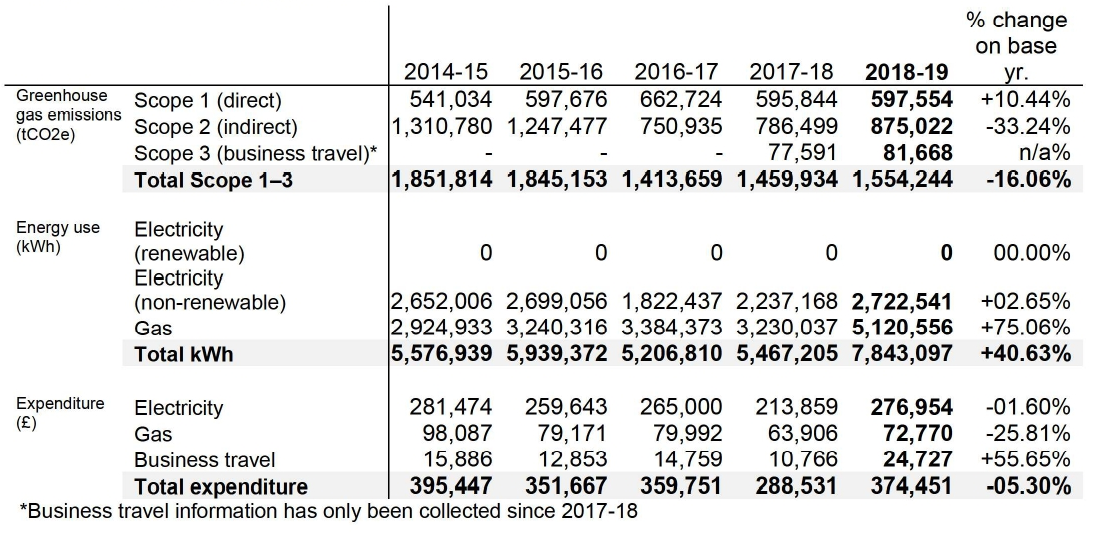
It is apparent that the Gallery achieved considerable improvements regarding its hazardous gas emissions as the reduction in carbon emissions is 20% during the period under consideration (see Table 2). The organization uses LED lighting and efficient energy controls to decrease energy consumption at its facilities. Waste management is another significant concern, and the Gallery has also achieved remarkable results. One of its targets is a full recycling circle to achieve 100% recycling or reuse of food waste (National Portrait Gallery annual report, 2019).
The Gallery has already achieved a 55% decrease in food waste during the past five years (see Table 3). An important goal related to biodiversity has already been set. One of the measures undertaken to address this objective is the management of bee-hives that has been kept on the roof of the National Portrait Gallery since 2010. It is also necessary to add that the organization launches numerous projects aimed at the sustainable development of the community with a focus on environmental and social issues.
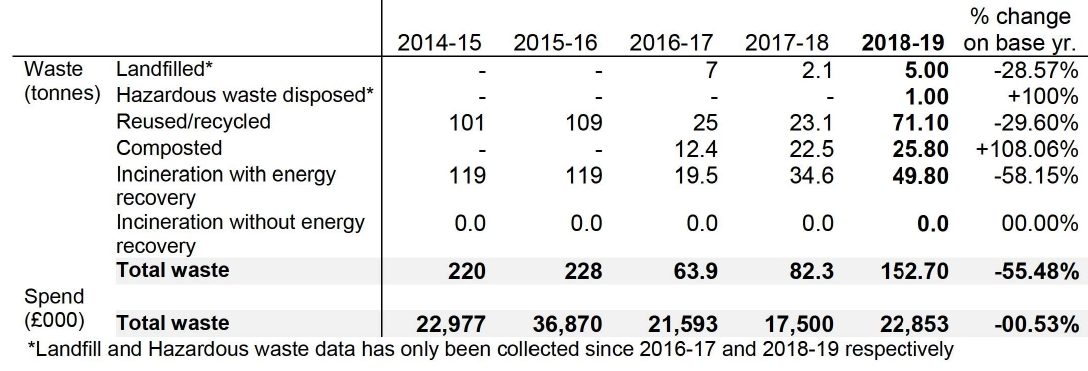
How the Gallery Operates
The National Portrait Gallery has to operate in quite a turbulent economic environment due to diverse constraints in the UK and global economies (see Table 4). Nevertheless, the organization manages to increase its total revenue that reached £24,357,000 in 2019 as compared to £22,444,000 in 2017-2018 (National Portrait Gallery annual report, 2019, p. 18). It is reported that of the earned amount, £708,000 was applied to Collection acquisitions.
The Gallery obtained £7,634,000 of Grant in Aid that was used to fund ongoing operations (£7,381,000) and maintenance (£253,000) (National Portrait Gallery annual report, 2019, p. 18). Apart from this aid, the Gallery receives other grants and generates income through fundraising and admissions (£16,723,000). These figures show that fund generation remains effective irrespective of external factors.

The organization’s fixed assets increased in 2019 through the acquisitions of lands, facilities, machinery, among others. Heritage asset additions of £774,000 included donated pieces, bequeathed, as well as provided in lieu of tax (National Portrait Gallery annual report, 2019, p. 19). The Board of Trustees ensured the adherence to the policy of paying creditors within 30 days, and 70% of bills were settled during this time limit or a shorter period. The investment fund in 2019 decreased as compared to the fund of 2017-2018 and reached £5,610,000 (and it was 6,002,000 in 2017-2018) (National Portrait Gallery annual report, 2019, p. 20). Again, the Gallery shows acceptable financial results although some difficulties are apparent.
Governance
As mentioned above, the Gallery is governed by the Board of Trustees who manage the operations of the Gallery collectively. The Board of Trustees delegates the administration and management of the Gallery to the Director who is an executive (National Portrait Gallery annual report, 2019). Dr. Nicholas Cullinan was appointed as the Director of the Gallery and is the Accounting Officer as well. The Director of the Gallery reports to the Board, the Parliament, and the Department for Digital, Culture, Media & Sport (DCMS). The diagram in Figure 1 shows the peculiarities of the Governance of the Gallery. The Board makes all the strategic decisions while the Director implements the established strategies. The board and the Director serve in accordance with the policies of ethical conduct that are based on the highest business standards.
Table 5. The Board of Trustees (The Board of Trustees, n.d.).
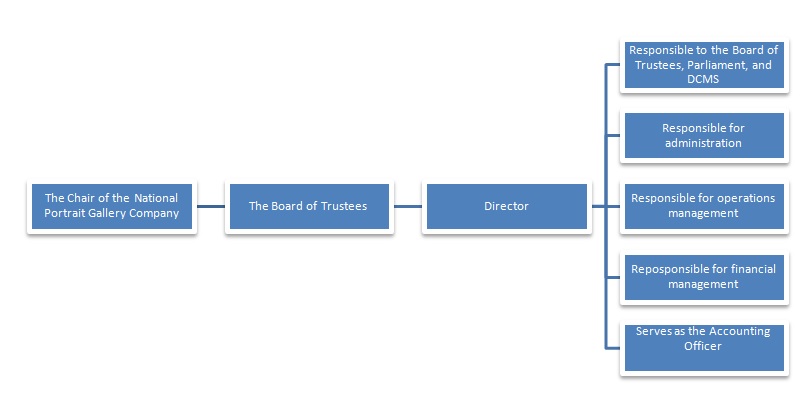
Stakeholders
When analyzing the performance of any organization, it is beneficial to identify all involved stakeholders. Stakeholders are individuals or groups that are influenced by the company’s behaviors and decisions, which makes the former interested in some aspects of the decision-making process (Wetherly and Otter, 2018). Various stakeholders can be listed when analyzing the operations of the Gallery (see Figure 2). The external stakeholders include the staff of the Gallery, the Trustees, the Director, and volunteers that are often involved in diverse projects. The external stakeholders are visitors, suppliers, partners, sponsors, authorities, community members, and the Parliament.
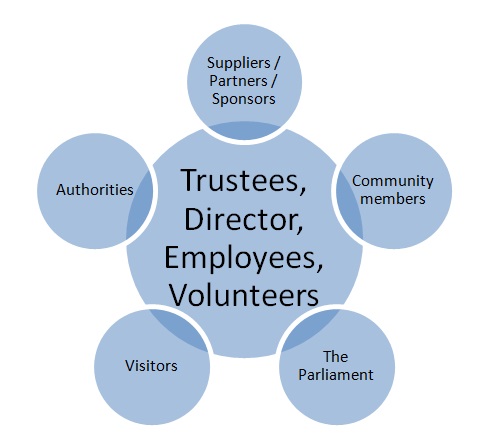
The organization and stakeholders tend to interact in various ways trying to address each other’s interests. The internal stakeholders are committed to organizational goals while their interests are also met through their financial compensations and other incentives. The external stakeholders benefit from using the services of the company or providing their own products or services to the Gallery. Community members are always influential stakeholders, and partners, including the Gallery, try to ensure effective communication and collaboration with them. This collaboration is mainly related to sustainability initiatives. Authorities often play an important role in supervising these relationships.
Stakeholder Power and Interest Theory
Level of attention It has been acknowledged that stakeholders can have a considerable impact on the development of any organization. Therefore, it is critical to identify potential ways stakeholders can affect a company. Various models and strategies have been employed, but Mendelow’s Matrix is one of the most effective instruments (Johnson et al., 2017). The tool was developed by Mendelow in 1981 but is still useful as it enables the measurement of the possible effects of any stakeholder (Ferretti, 2016). According to the matrix, stakeholders have different interests and different levels of power, which has a direct influence on the way they shape organizational operations and development (see Figure 3).
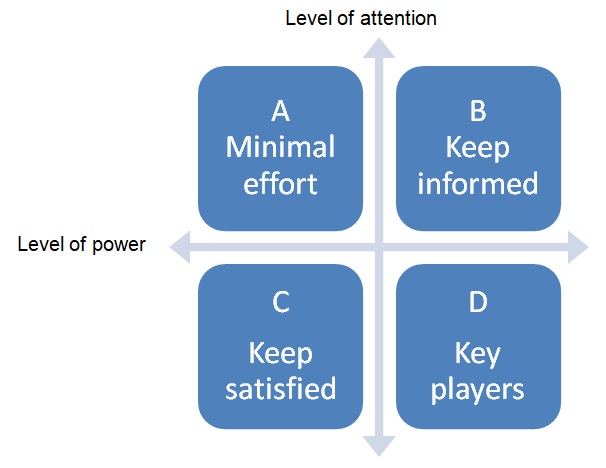
According to this model, two major factors are put to the fore, power, and interest. The stakeholders who have power can have a direct impact on various operations and the way an organization performs and develops, while those who have little power are unlikely to have a meaningful effect. At the same time, power is not the decisive factor as interest plays an important role as well (Johnson et al., 2017). Even those who have complete power may be disinterested in taking any actions, so they are unlikely to influence any situation. However, some groups (even the least powerful ones) may have a deep interest in certain matters and search for different ways to affect the behavior of a company. Eventually, these groups find diverse methods to shape organizations’ activities.
Mendelow suggested several major strategies when treating stakeholders in terms of the level of their power and interest. Quadrant A involves stakeholders having low interest and low levels of power. Minimal effort is required when dealing with these groups and individuals as the chance of their active and meaningful involvement is very low (Johnson et al., 2017). Quadrant B reflects the potential influence of people with low power but high interest level. With these stakeholders, it is critical to provide detailed information on the matter and ensure effective communication. Although these people may have little power to have a direct impact on an organization, the lack of information on particular aspects may make them alert and committed to changing the situation.
Quadrant C involves the stakeholders characterized by low interest and high power levels. In such cases, companies should keep these people and groups satisfied providing the necessary information and addressing when needed (Johnson et al., 2017). It is necessary to make sufficient effort to communicate with these individuals, but it is also necessary to remember that they are not likely to interfere with the business (at least, very often). Finally, Quadrant D is the group of stakeholders who need the most of an organization’s attention. These people have the power to influence companies and have certain interests to do it. Hence, companies should try to make sure that these stakeholders’ actions will be in line with organizational strategic goals. It is essential to identify the exact levels of power and interest to be able to create the corresponding strategy for every group.
Stakeholder Power and Interest
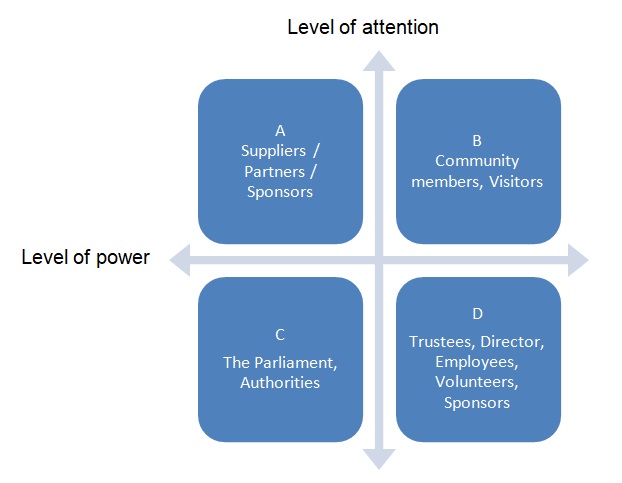
The major stakeholders associated with the National Portrait Gallery have been identified earlier. They can be grouped in terms of Mendelow’s grid, which will help in developing interaction strategies with every group (see Figure 4). A detailed description of each group is presented in Table 6.
Table 6. The Peculiarities of the Stakeholders Related to the National Portrait Gallery.
Current Issues
The National Portrait Gallery has to address diverse issues related to financial constraints, demographics, policies, and ethical norms. It is possible to focus on two current issues the organization has to solve. One of these issues is the reputational loss due to ethical aspects related to exhibitions. Grosvenor (2019) mentions the ethical dilemma of receiving funds from controversial sponsors or displaying controversial exhibitions.
Clearly, receiving funds from individuals or companies related to illegal activities may lead to visitors’ and the overall public’s discontent, which may decrease visits. The display of controversial pieces may have an even stronger effect as visitors may have no interest in seeing certain items or are even appalled by the exhibition, which can lead to reputational and, eventually, financial losses. The Trustees may need to develop clear standards and policies regarding the display of different exhibitions on specific topics.
The other issue to discuss is closely linked to reputational losses as well. Furness (2018) states that due to the incorrect calculations of the number of visitors, the interest in the Gallery decreased. The information system used by the National Portrait Gallery provided figures that were considerably lower than real numbers, which made people less interested in visiting an unpopular site. The Trustees have to make sure that such situations will not repeat, and only true data will be publicized. At present, it is also important to launch an effective campaign promoting the current and upcoming exhibitions in order to attract more visitors and sponsors.
Reference List
Barron, P. and Leask, A. (2017) ‘Visitor engagement at museums: generation Y and ‘Lates’ events at the National Museum of Scotland’, Museum Management and Curatorship, 32(5), pp. 473-490.
Euromonitor International. (2020) Top 10 global consumer trends 2020. Web.
Ferretti, V. (2016) ‘From stakeholders analysis to cognitive mapping and Multi-Attribute Value Theory: an integrated approach for policy support’, European Journal of Operational Research, 253(2), pp. 524-541.
Furness, B. (2018) ‘National Portrait Gallery ‘lost’ a million visitors thanks to counting system that could not count’, The Telegraph, 28 August. Web.
Gallery history (n.d.). Web.
Grosvenor, B. (2019) ‘The National Portrait Gallery’s ethical dilemma’, The Art Newspaper, Web.
Johnson, G. et al. (2017) Fundamentals of strategy. London: Pearson UK.
National Portrait Gallery annual report and accounts 2018-19 (2019). Web.
The Board of Trustees (n.d.). Web.
Wetherly, P. and Otter, D. (2018) The business environment: themes and issues in a globalizing world. Oxford: Oxford University Press.